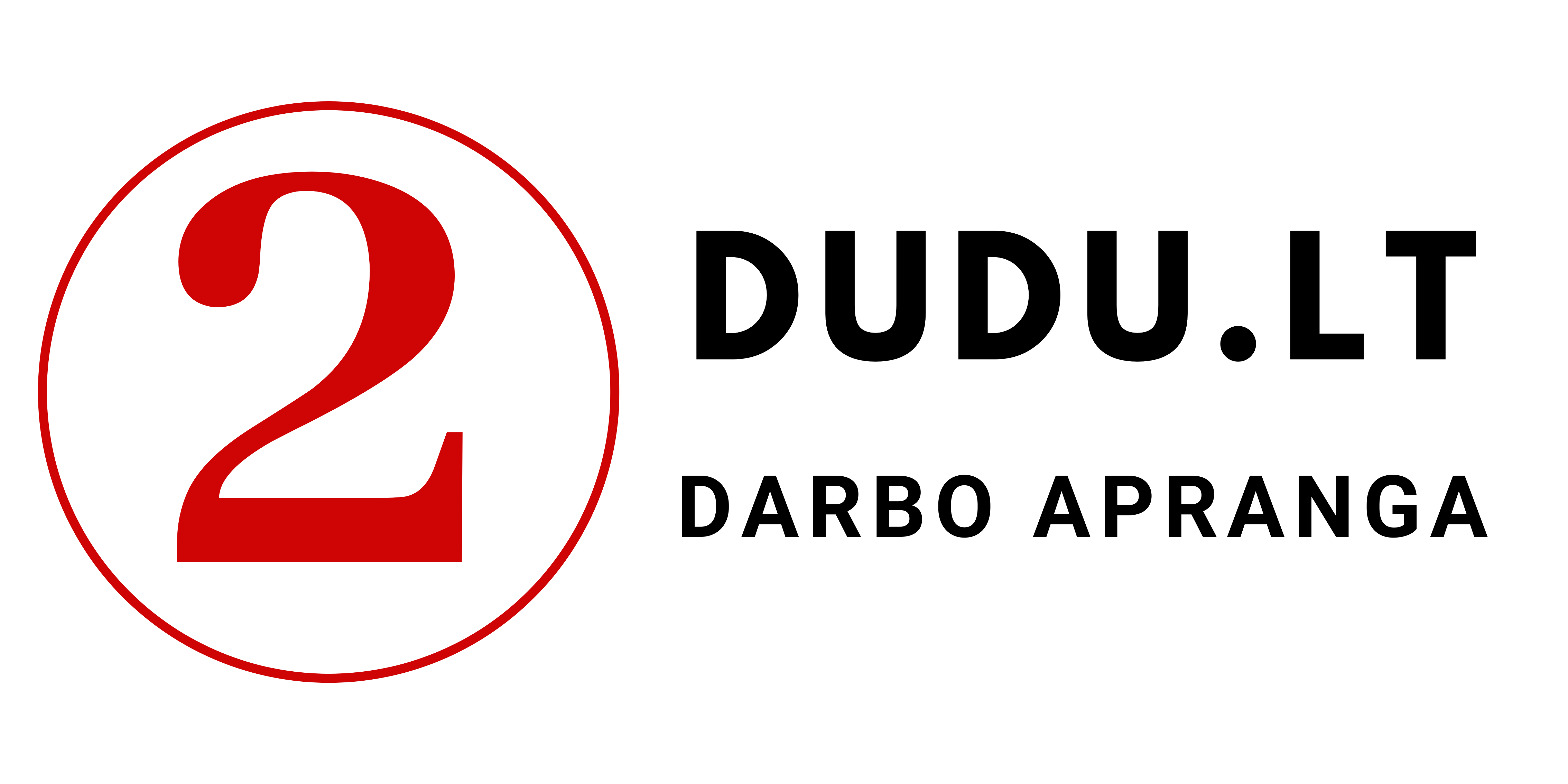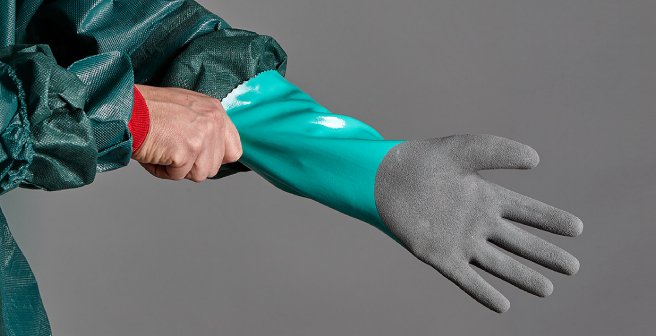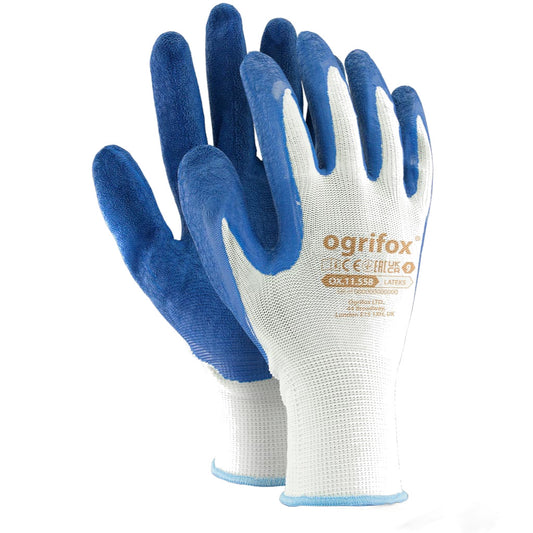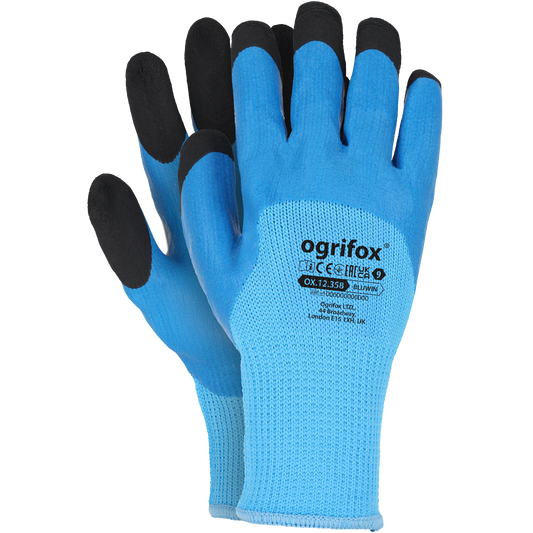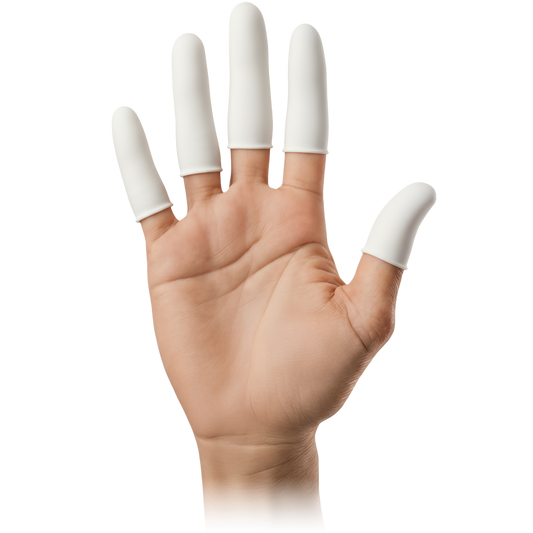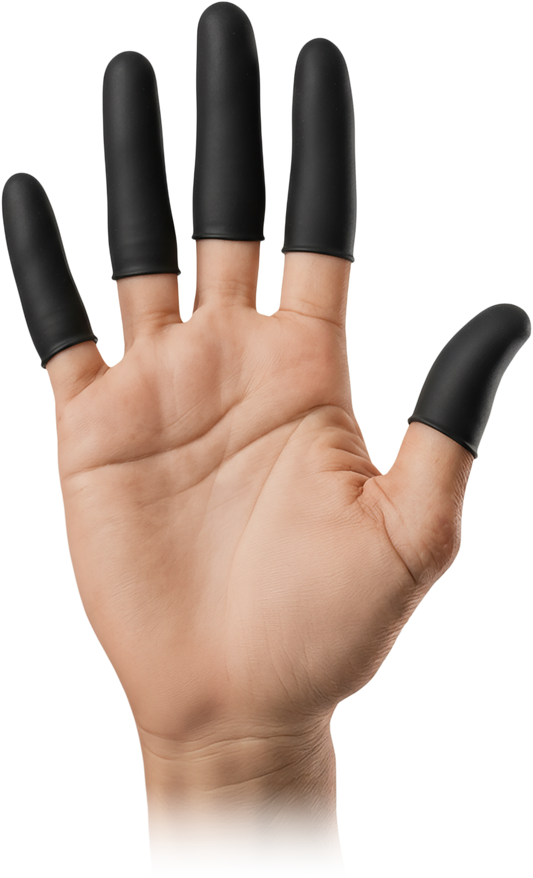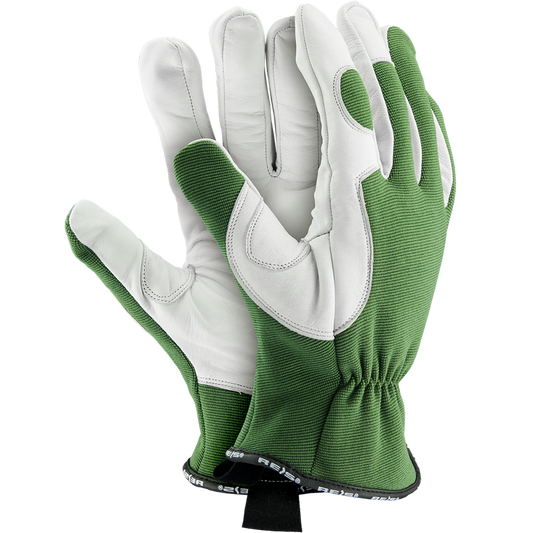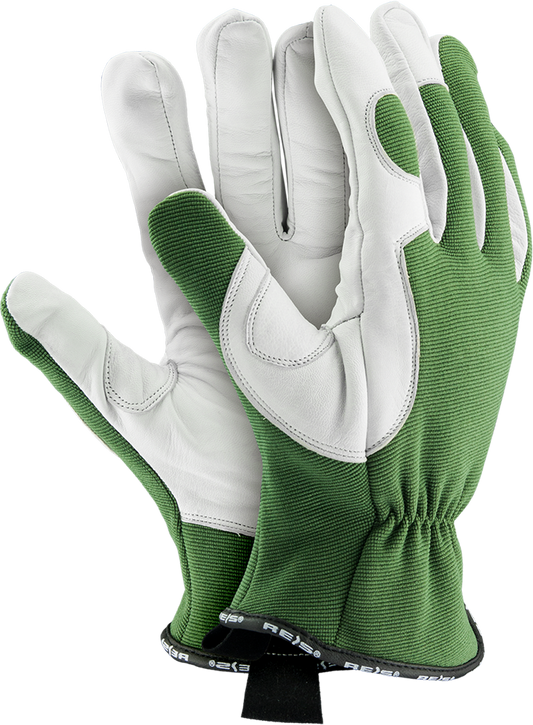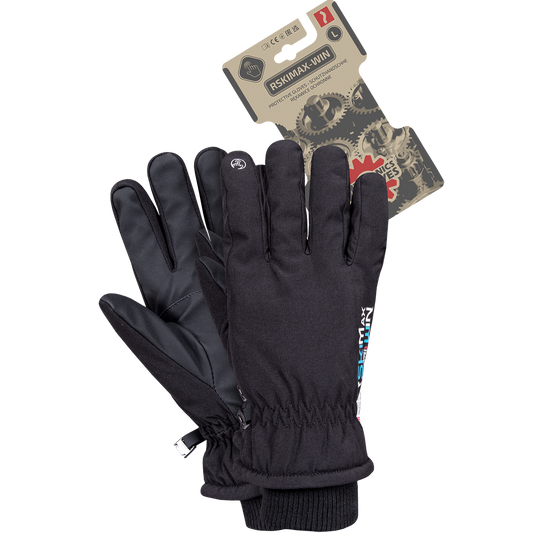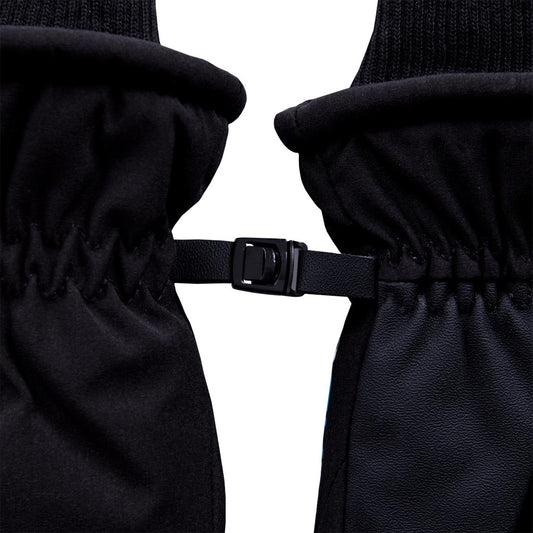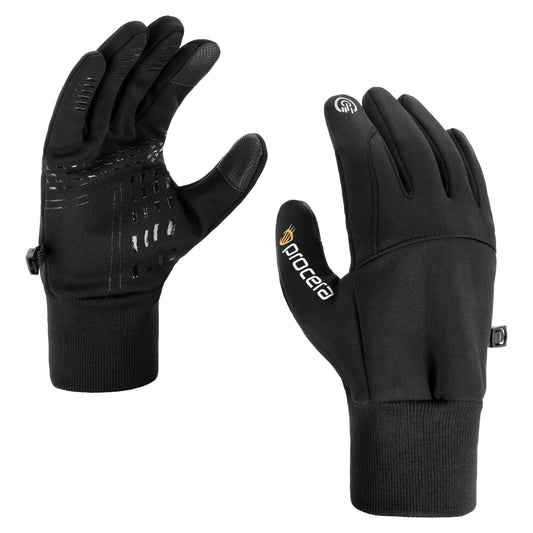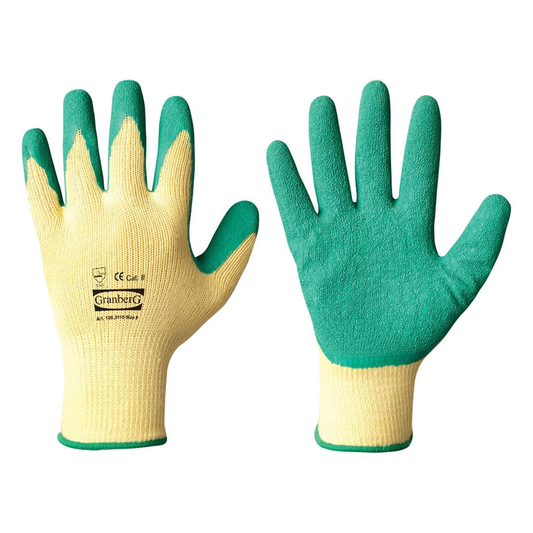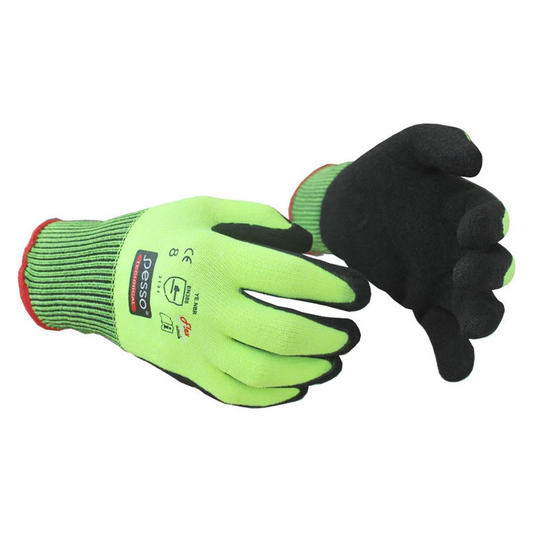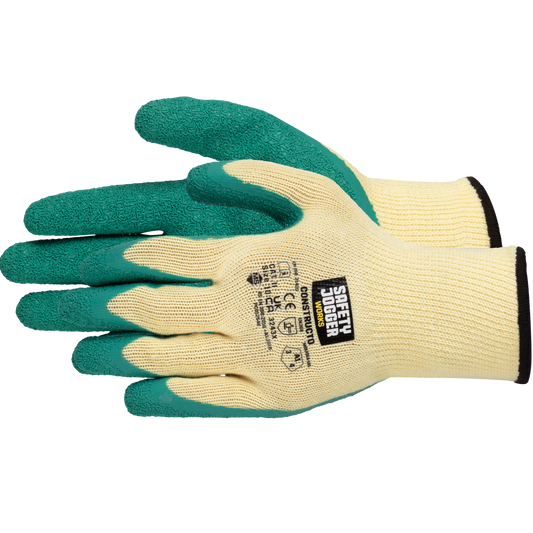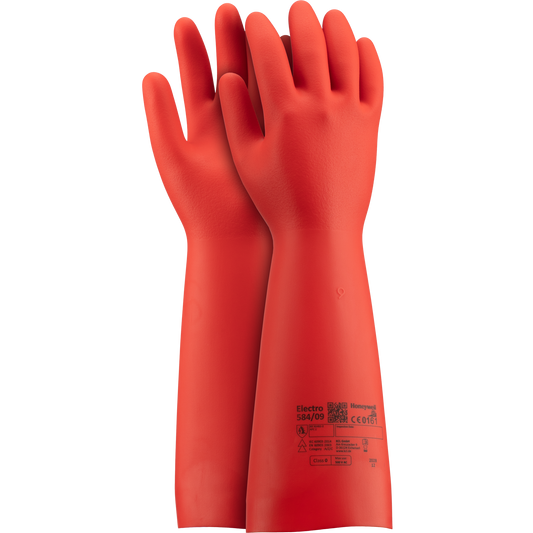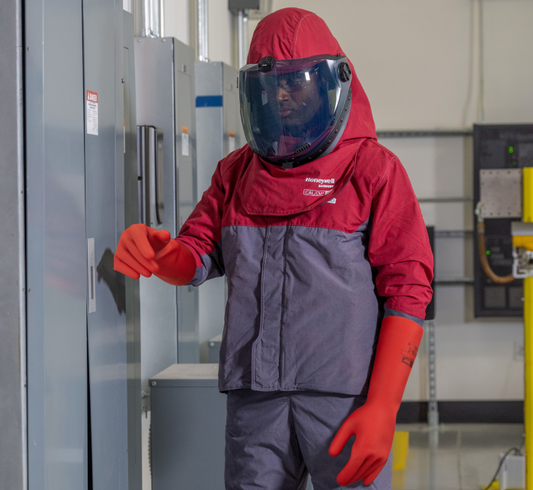The European Union standard for protective gloves is divided into several categories, each with its own specific requirements. The most important standards for industrial work gloves are as follows:
- EN 388 : This standard covers mechanical hazards such as cuts, abrasions and punctures. Gloves that meet this standard will have a series of numbers on their label indicating their level of performance in each of these areas.
- Abrasion resistance : Measures the ability of a glove material to resist abrasion against rough surfaces. The performance level is indicated by a number from 0 to 4, with 4 being the highest level of abrasion resistance.
- Cut resistance : Measures the ability of a glove material to resist cuts from sharp objects. The performance level is indicated by a number from 0 to 5, with 5 being the highest level of cut resistance.
- Tear resistance : Measures the ability of a glove material to resist tearing from a force applied perpendicular to the material. The performance level is indicated by a number from 0 to 4, with 4 being the highest level of tear resistance.
- Puncture resistance : Measures the ability of a glove material to resist penetration by a sharp object, such as a needle. The performance level is indicated by a number from 0 to 4, with 4 being the highest level of puncture resistance.
- The four performance levels are combined into a single icon, which is usually printed on the glove or on its packaging.
- It is important to note that EN 388 is a performance-based standard, meaning that it sets out performance requirements for gloves but does not specify the materials or methods that must be used to achieve that performance. This allows manufacturers to use a variety of materials and methods to produce gloves that meet the standard.

- EN 407 : This standard covers thermal risks such as heat and flame. Gloves that meet this standard will have a series of numbers on their label indicating their level of performance in each of these areas. The standard is divided into seven performance levels, each of which is tested separately:
- Flame resistance: Measures the ability of a glove material to resist ignition and the spread of flame. The performance level is indicated by a number from 0 to 4, with 4 being the highest level of flame resistance.
- Resistance to contact with hot surfaces : measures the time it takes for the inside of the glove to reach 40°C when in contact with a heat source. The performance level is indicated by a number from 0 to 4, with 4 being the highest level of resistance to contact heat.
- Resistance to convective heat : measures the time it takes for the inside of the glove to reach 40°C when exposed to a heat flux of 50 kW/m². The performance level is indicated by a number from 0 to 4, with 4 being the highest level of resistance to convective heat.
- Radiant Heat Resistance : measures the time it takes for the inside of the glove to reach 40°C when exposed to a 50 kW/m² radiant heat source. The performance level is indicated by a number from 0 to 4, with 4 being the highest level of resistance to radiant heat.
- Resistance to small molten metal splashes : Measures the ability of the glove material to resist small droplets of molten metal. The performance level is indicated by a number from 0 to 4, with 4 being the highest level of resistance to small molten metal splashes.
- Resistance to large molten metal splashes : Measures the ability of the glove material to resist large droplets of molten metal. The performance level is indicated by a number from 0 to 4, with 4 being the highest level of resistance to large molten metal splashes.
-
Resistance to heat penetration : Measures the ability of a glove material to resist the penetration of heat from a hot object in contact with the glove. The performance level is indicated by a number from 0 to 4, with 4 being the highest level of resistance to heat penetration.
The seven performance levels are combined into a single icon, which is usually printed on the glove or on its packaging.

- EN 420 : This standard covers general requirements for gloves, including design and construction, as well as sizing and marking. The standard covers a wide range of topics, including:
- Sizing : Gloves should be sized appropriately to fit snugly, but not too snugly, to allow for good dexterity.
- Materials : Gloves must be made of materials that are safe for their intended purpose and free of harmful substances.
- Design : Gloves must be designed so that they do not pose any danger to the user and are easy to put on and take off.
- Construction : Gloves must be constructed to be durable and fit for purpose.
- Labeling : Gloves must bear information relevant to the user, including the manufacturer's name and address, size, and any relevant standards or certifications.
- Hygiene : Gloves must be hygienic, easy to clean and must not cause allergic reactions or skin irritation.
- Packaging : Gloves must be packaged in a way that protects them from damage and keeps them clean.
-
Instructions for use : The gloves must be accompanied by instructions for use, including information on how to put them on, take them off, care for them and store them.
EN 420 is a performance-based standard, meaning that it sets out performance requirements for gloves but does not specify the materials or methods that must be used to achieve that performance. This allows manufacturers to use a variety of materials and methods to produce gloves that meet the standard.

How to choose protective gloves?
When choosing protective gloves, it is very important to consider the specific risks that arise in your workplace. For example, if you use sharp instruments, you will need gloves with high cut resistance. When working with hot materials, you need high-level heat-resistant gloves. Of course, you will also want gloves that meet the relevant EN standards for your sector.
It’s also important to consider how well the gloves fit. You want gloves that are comfortable to wear and still allow for proper hand and finger dexterity. Gloves that are too tight will be uncomfortable to wear and may make it difficult to do your job. Gloves that are too loose won’t provide as much protection.
In summary, protective gloves are an essential part of hand protection at work. It is very important to choose gloves that meet the relevant standards and are adapted to the risks in your workplace. By following these rules, you can ensure that your hands are protected and that you can work effectively and safely.

